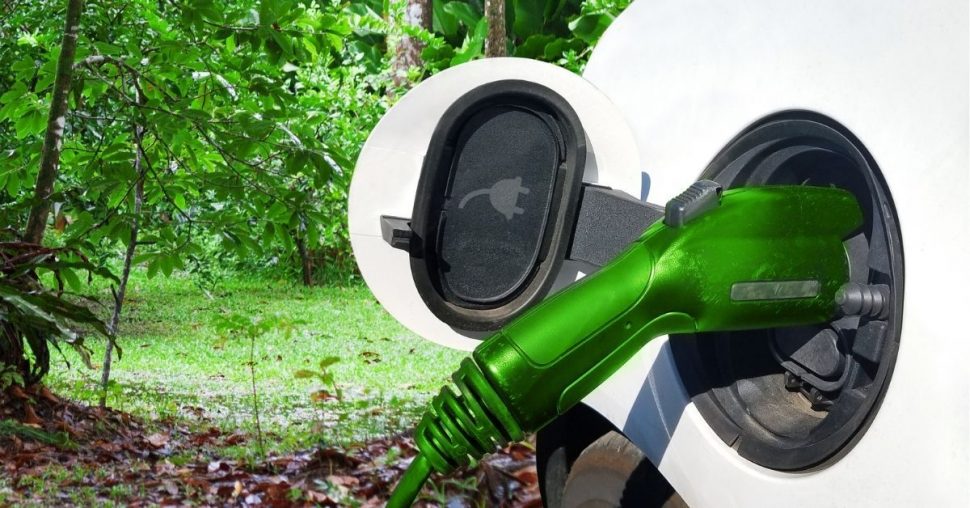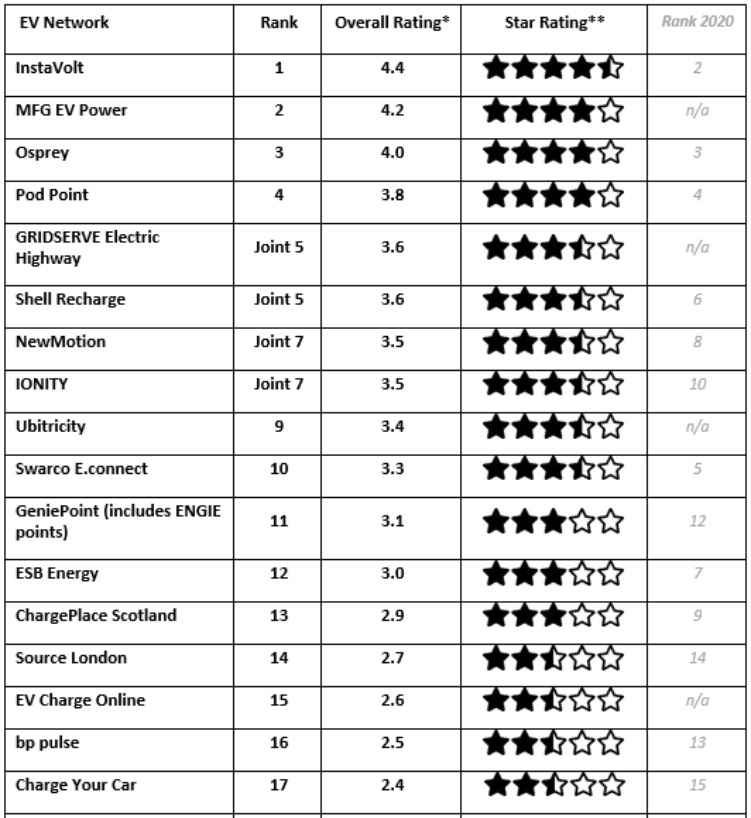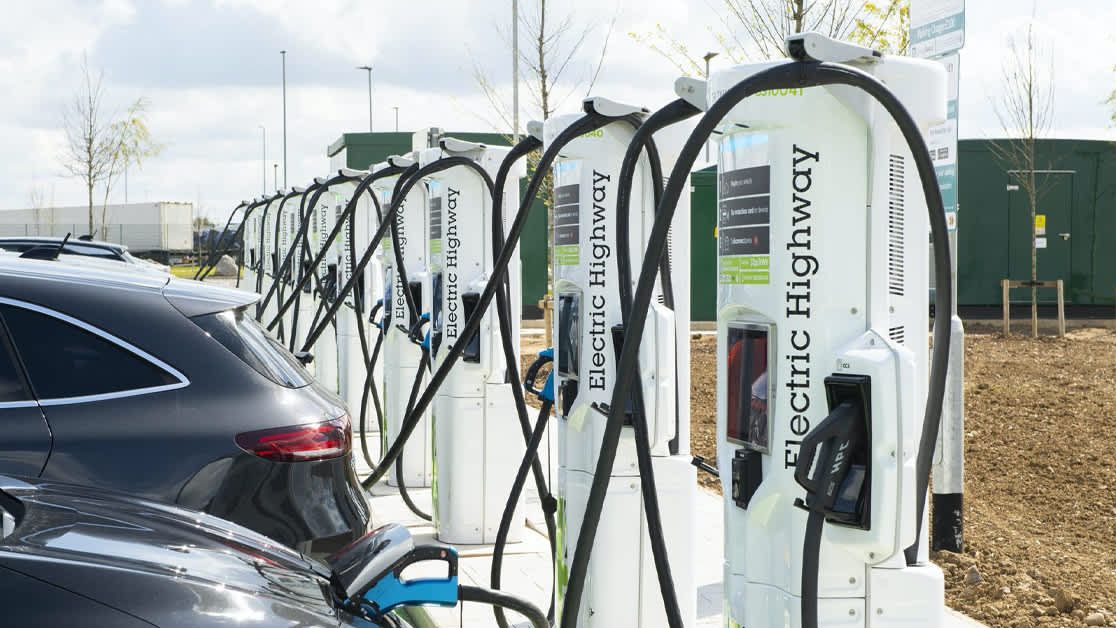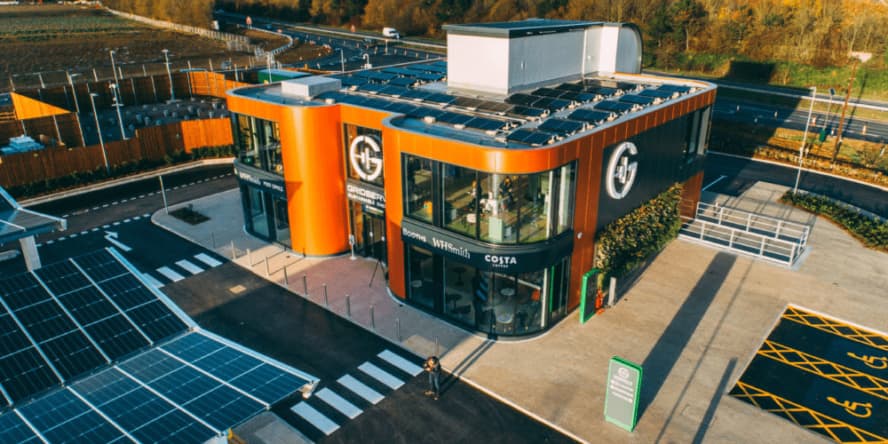If you’ve switched to an EV in the past year, longer journeys in your electric car may still feel like a trip into the unknown.
Electric cars today have double the range of models only a couple of years old. The public charging network has improved dramatically too, with around 100 rapid chargers being added each month. Any longer journey in your EV is likely to take you past at least one brand new, lightening-fast charging option that wasn’t there just a summer ago.
Although things are looking up, before buckling up for a long journey do take a moment to plan, using a good EV route planning tool. Driving an electric car beyond its real-world range is different to leaving the house in a petrol car, but a well-planned EV road trip may bring you some extra joy on the road.
Three golden rules for charging on EV road trips:
1. Stop rapid charging around 80% full (any more takes much longer); 2. Plan to stop before you hit 20% (better for your nerves and battery); 3. Choose your network wisely. Our top picks are: Instavolt, Osprey, MFG and Gridserve.
How to drive longer journeys in an electric car
For most EV drivers, an overnight charge on your driveway covers most journeys. Getting onto the right EV tariff will ensure all your home charging is both cheaper and greener.
Find an energy tariff that fits

Over a longer distance trip, depending on your electric car’s battery, electric motoring does require a stop every 150-200 miles to charge. This fits with the AA’s long-standing advice to motorists to aim to stop every two hours or so. Generally, by the time you’ve grabbed a coffee and had a loo break, you’ve taken about the same time as a rapid charge to 80%.
Choosing an EV journey planning app
If you are new to electric cars, your first stop is to download a journey planning app like Zap Map or Better Route Planner. Pop in your start point and destination to get an idea of charge point locations and charging time.
While you are getting used to your electric car, plan to refill when you still have 50 miles in the tank – that’s 25% of a 200-mile range. As you are likely to be fully laden, and less efficient in terms of miles per kWh, keep in mind a charger before the one suggested on the app.
Worry-free tip: You can use the advanced settings to increase the ‘% charge arriving at stop’ (Zap-Map) or SoC (State of Charge) battery level remaining (ABRP). This will show you chargers earlier into your trip, minimizing any potential for stress. It also ensures you keep the charging in the battery’s most efficient zone – the chemistry of an EV battery means you can add miles faster when your battery is between 20% and 80% full. Plan to set off again when your car gets to 80% (that’s 200 miles for a 250 mile range car).
If you are new to EVs, it’s definitely a good idea to be more cautious until you get some trips under your belt. Charging apps can be over-optimistic (they don’t know about the four bikes on your roof or holiday luggage in your boot) and so it’s better to have early stop options that you don’t need to take.
Not all charging networks are equally reliable
You can use advanced filters in your chosen journey app to favour the networks that are more reliable. The same filters can also hide networks that require an app or special RFID card, although most now accept contactless payments.
Zap-Map’s league table ranks the UK’s most popular EV charging networks with their community of EV drivers. EV drivers generally have good things to say about Instavolt and Osprey networks, and the newer MFG hubs are a good bet. Gridserve are also reliable, but on major motorway locations their chargers can be busy. We suggest you start by limiting your results to these four networks.

When you’re on the road, your chosen route planner app will be able to give you a live charger status network. It’s helpful to see the exact location, or at least a photograph of the charger, to save you hunting around for the plug in a larger car park.
As well as contactless payments, there are also options to pay for certain chargers through convenient third party schemes, for a bulk discount like Bonnet, via your utility bill (Octopus Juice) or through Zap-Map’s Zap-Pay scheme.

Do you have time to leave the motorway behind?

While a work trip means you just want to get there and back in the shortest time possible, a summer road trip in an EV can give you the chance to enjoy yourself en-route. Try exploring more leisurely routes along ‘A’ roads. Use the “avoid highways” option in Zap Map or Google maps and search along the route to remind yourself of places you’ve always wanted to stop at.
Slower speeds mean you’ll get more miles from your battery. Like all cars, electric cars use more power at motorway speeds than they do at 60mph (it’s just that you’re likely to be more aware of it once you switch to an EV). Taking an A-road, that can often mean you travel a shorter distance too, giving you a double benefit of fewer and more efficient miles.
Consider making your charging a ‘destination’. A number of slower chargers are available at National Trust sites and other attractions – meaning you can charge up while you take in a welcome diversion. There are 36 charge points at National Trust sites in Wales alone. Just don’t forget to pack your charger cable! Unlike rapids where you just plug in, these slower charge points are often ‘untethered’, meaning you need to supply the cable.
Long journeys welcome the charge hub
As more and more motorists switch to electric, busy locations with one or two chargers could mean waiting in a queue if you are travelling at peak times. The answer to this is the charge hub, the forecourt of EV charging.
Gridserve, who opened their first dedicated EV charging hub at the end of 2020, plan to open over 100 Electric Forecourts across the UK in the next five years. At Gridserve’s first hub in Braintree, Essex, 36 electric vehicles can be charged simultaneously, with high power chargers that can deliver up to 350 kW of charging power – a whopping 200 miles of range in 20 minutes if you have a car charge speed fast enough to keep up.

Osprey Charging has announced it is installing 1,500 rapid chargers at over 150 hubs across the UK by 2025. It is targeting locations on strategic A-roads and adjacent to motorways.
Bp has started to dip its toes into charging hubs, but has stuck to locations within London and limited to fleets like taxi drivers. Shell has also limited itself to London, with a hub open in Fulham and over half its forecourt chargers within the M25.
Searching for the perfect electric car?
What about a charge at your destination?
Okay, we’ve covered the journey, but what about when you arrive at your destination? As electric car ownership expands, venues and destinations across the country are making moves to attract visitors with on-site charging. Hotel chains are rolling out charging stations for guests and are often the location of public rapids too, meaning that car owners can either get a quick charge en-route or a slow charge overnight.
Online booking services such as booking.com allow you to filter by electric car charging when you make a search. Self-catering booking sites, like Airbnb, also offer many stays with electric car charge points.
If you are staying with friends or family, ask beforehand if they have an outside plug socket, and don’t forget to pack your ‘granny cable’ – that’s the lead with a three-pin plug on may have come with your new car. Check they have an extension lead handy if needed, but always make sure you fully unwind the extension. Reduce your car’s charging speed to the lowest setting (usually 5 amps) and never charge on a coiled cable, as the heat after several hours may trip the house circuit.
If all fails, who can you call?
Patrol vehicles can now tow you with raised wheels to the nearest charging station or to your destination – whichever is closer. The RAC is trialling an EV Boost system in 80 vans, capable of giving a charge to motorists at the side of the road.
So with an app and a little inside knowledge, you’re set for successful road trips in your new electric car. To get the most out of your EV at any time of the year, read our tips for maximising the efficiency of your electric car, even when it’s parked up:
Best EV route planner apps on test
